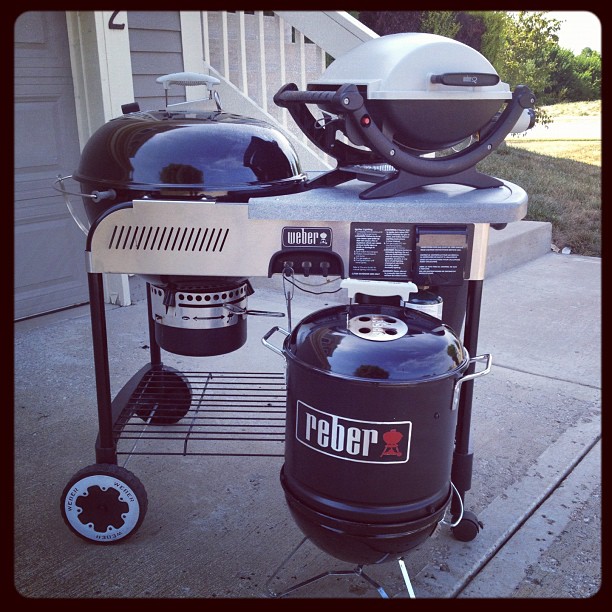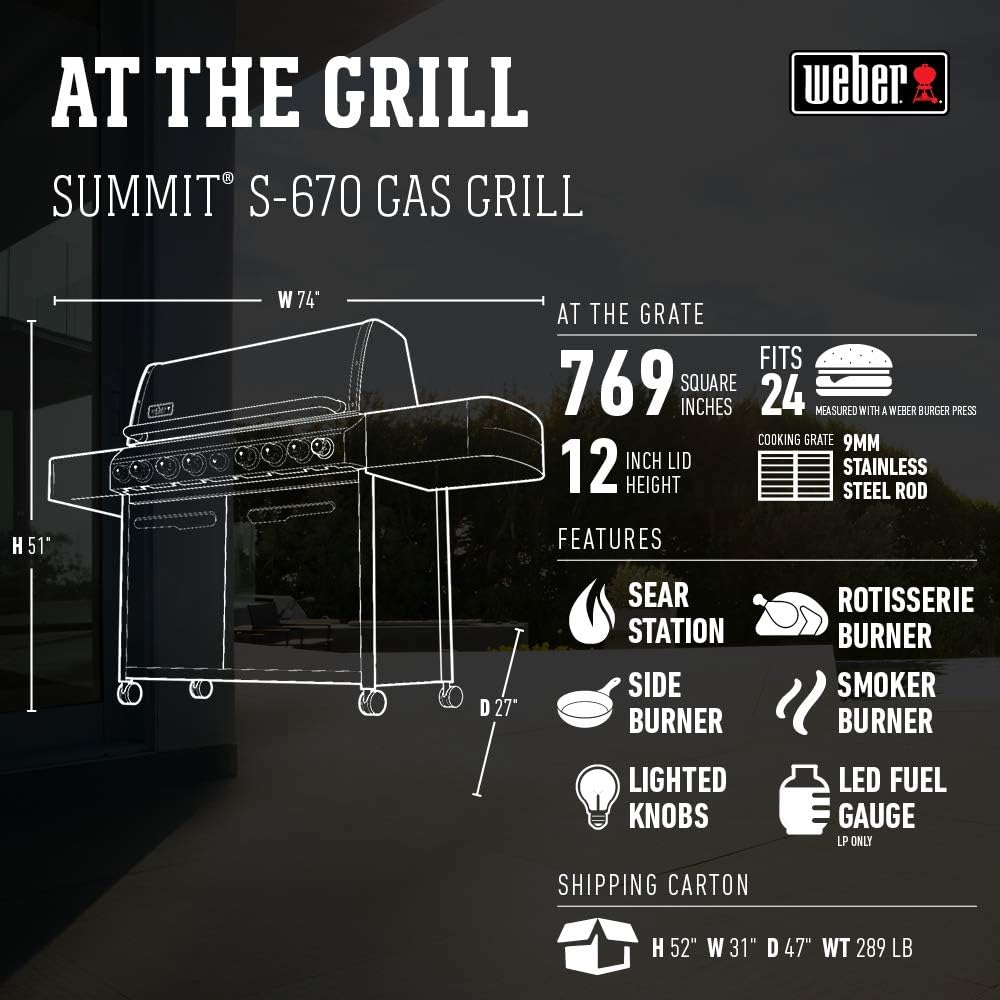We may earn an affiliate commission from any company linked to in this post.

Did you accidentally mistaken your kettle for a sh*tter and unloaded in it? Weber will (should) get it replaced. Weber’s products are backed with lengthy warranties, and replacement parts are quickly provided thanks to a smooth operation of customer service. Weber/ their service line is going to be there always. Yes, there are better grills out there (grill build/ quality speaking), but some of these brands have gone out of business or were bought out.
For the most part, no other grill brand dominates the 6-$1,000 price range than Weber. Euromonitor International, a market researcher, estimated Weber made up to 35% of the grills sold in 2012, totaling about $2.5 billion. The runner-up to Weber didn’t even have half its market numbers, not to forget Weber BBQs rarely cost less (usually much more). It’d be like Toyota being outsold by Mercedes.
In an attempt to be unbiased here, those who have had a Weber for many years who keep up with what Weber has been doing behind the scenes, might point out there was a drop off in the quality of their grills starting around six or so years ago when certain parts started to be made in China, and fast forward to today most parts are probably Chinese made.
Why are Weber grills so expensive?
Michael Kempster, Marketing Global Chief Officer with over 43 years in the company, voiced that the improvements in the product often start with the feedback of customers left via social media and telephone. When Weber heard enough gripe from customers that the steel, porcelain-coated grates weren’t holding heat high enough in colder conditions, they made the switch to cast iron.
He basically even admitted to their unapologetic stance for sometimes being the priciest of grills.
Very few of Weber’s factories outside the one’s in Huntley and Palatine make Weber grills, with test models being subjected to “tortue” styled tests, intending to simulate 10-15 years of usage.
Weber does things other grill brands won’t do. Take for instance the newer Weber Spirit II.
They saw the possibility of the grill’s airflow being disrupted due to how windy it can get during the cook. So, they included a heat diffuser placed with the middle burner overhead. As well, each of the burners in lower priced gas models is usually positioned with only one heated metal prism overhead (Weber calls them Flavorizor bars). The cook box in a Spirit II is entirely blanketed with these metal tents so the heat is more even.
Consumer Reports and America Test Kitchen have historically rated Webers highly (though not everyone is impressed by their trustworthiness). The Wirecutter (an NYT company) in June 2018 updated their list of best gas grills based on six they took for a test drive. They decided on their top pick being the Weber Spirit E-310. For $200 more, they recommend an upgrade with a Weber Genesis II E-310.
Older Generation Weber Grills May be Superior
The older generation of Webers are usually the grills you’ll hear of that have lasted people a decade or more. Rehabbing an older Weber grill model is a popular thing these days. If you don’t want to spend $1,000 on a new Weber, you could save hundreds by finding a used Genesis 1000 or Genesis Silver B, fix/ clean it up some, with the reassurance that both old and new Weber units have many parts available that can be easily found on the market.
To be more critical, there seems to be a gradual decline in quality of Weber over recent years. The new 2018 Weber Spirit II grill, for example, has been getting low forum feedback concerning the lightweight feel of the hood, raising some doubt to the integrity of its construction.

Are Weber Grills Worth the Money?
Generally, yes. What might hold you back from purchasing a Weber is the price. Because they last 10, 20 years, or more is enough for most folks to justify their expensive nature, especially when the longevity of some cheaper grills only expects three or four years until a cosmetic or mechanical issue arises. In comparison, Webers should be cheaper in the long run.
Weber-Stephen notoriously stayed from going public with revenue numbers, but no matter what that is, it would surely be more if the company adopted other’s approaches used to bring about sales in the short-term- like ad-based broad budget campaigns, quick reveals of new grill pieces (a 2016 Summit Charcoal grill is a start) or (fingers crossed) discounts.
Michael Kempster explained that they’ve always tried to get a bond created between them and the grill owner. He put it as a “loyalty loop”, allowing Weber to post up steeper price tags in just about all categories. Take for example the $499 listing on Home Depot’s site for the Weber Spirit 3-burner (the previous Spirit model) and a similar, cheaper $265 and change Dyna Glo 4 burner model (yes, one additional burner and 242 square inches of additional primary cooking space).
As for Weber’s Use of 430 Stainless Steel
Somewhere along the way Weber went from 304 steel to the inferior 430.
Two specific grades of stainless steel see the most use by grill makers: grills using 304, and 430 grades. Lower cost brands use the more inexpensive 430 steel to get that gleaming style aesthetic, however being of a very thin steel. Those in the industry who use higher quality 304 steel place importance on it in the spec sheet.
While 430 is inferior, thick-gauged 430 (like the steel found in Webers), works quite well and holds up.
The hood of most, if not all Webers includes a dial thermometer, which gives an approximate temperature away from the grates and meat, closer to the hood. Although, it’s better to place a probe on the grates where the cooking happens, and use a digital thermometer of your own. In the current digital age, Weber’s lack of digital capabilities is a bit underwhelming.
Markdowns are hard to come by, as Weber’s marketing budget is distributed to retailers to keep their prices maintained at a minimum level.
Weber’s image gains some points by only picking retailers to sell their grills through that hold up the expectations people have when going into a shopping experience for gas grills that commonly sets one back a number of Benjamin bills. Kempster has said that warehouse clubs are not included, like Costco or Sam’s Club.
Because of Weber’s reputation, there’s less pressure to introduce hit new grills before the next calendar year, a bar that’s set high even for other big players like Apple and Nike.
In the 60+ years since Mr. Stephen put together a charcoal setup from (literally) a buoy float, Weber’s business has set an example for how a brand aimed at consumers can take a market’s lead while not giving in to reduced prices.
Resources
Featured image under a CC BY-SA 2.0 DEED license
http://www.bloomberg.com/news/articles/2013-06-27/weber-grills-mostly-made-in-america-by-private-equity
